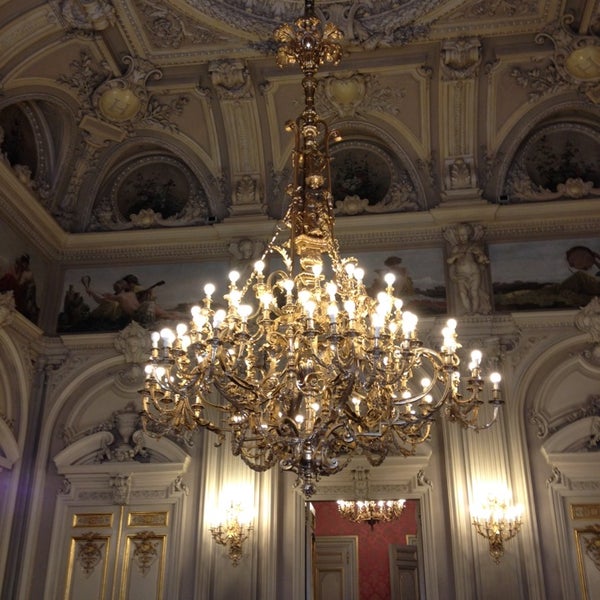

Historical palace of Rome.
Villino Hüffer is a large villa in Rome. It is located in Via Nazionale near the municipal art gallery. Much praised by Gabriele D'Annunzio for the elegance and comfort of its rooms, the building has been restored in recent years.
The villa is separated from the street by a fence and a wrought iron gate, as well as a courtyard with palm trees. It is a neoclassical building with a floor plan of 24 × 34 meters. The interior is sumptuous with marble columns and panels.
The Villino is based on a project by the French architect Jules Antoine François Auguste Pelléchet (1829-1903).
Pelléchet designed a facade more reminiscent of Paris than of Rome. The ground floor consists of a series of arched entrance portals; the first floor is the beletage or living area, with tall French windows and typical French gable. The three central windows are highlighted by Corinthian columns.

This ensemble recalls the loggia of Palazzo Borghese, where Hüffer lived at the beginning of his stay in Rome.
The second floor is lower than the Beletage and has rectangular windows. The roof is typically Italian, flat and without a sloping roof.
The interior of the building looks like a set for the first act of Giuseppe Verdi's La traviata.
The sculptor Wilhelm Haverkamp was created in 1891 on behalf of Hüffer, set up in the entrance of the villa's boys in the Corinth chapter.
The building is managed by Fondo Ambiente Italiano (FAI), a non-governmental non-profit organization and can be visited by appointment. The owner since 2001 is the Bank of Italy, which uses it as a historical archive (Banca d'Italia Historical Archive). The archive has important documents on the former Italian Lira currency and on Italian economic history in general, including an extensive library. It was awarded in 2009 with the European prize for the best preserved company archive.
Wilhelm Hüffer (* 1821 in Münster, † 1895 in Rome) had the name of his villa name built between 1880 and 1883. The architectural style was oriented towards the end of the 18th and the beginning of the 19th century. Rome was at that time only a few years the capital of Italy. Hüffer was offered the title of nobility baron in Italy. He bought the property in 1879 and moved into the villa in 1883.
Hüffer began entrepreneurial training in Bremen in 1838. In the early 1840s he went to Paris and worked there in the Pescatore trading house.
From 1 January 1852 he became a partner in this trading house; its founder died in 1855. Hüffer became rich by importing Cuban cigars.
In the early 1850s he leased the French tobacco monopoly. His only daughter (Amalie) died in infancy.

When the Franco-German War broke out in July 1870, he moved to Rome.
In 1871, at the age of fifty, Wilhelm transferred the company to his younger brother Leopoldo.
He followed her artistic inclinations and sat down. for the restoration of the Trevi Fountain.
In 1889 he founded the Hüfferstiftung orthopedic hospital in his hometown of Münster.
Wilhelm Hüffer was buried on May 5, 1895 in Rome.
Villino Hüffer
Address: Via Nazionale 191
Phone: +39 06 47921
Site:
http://mobile.060608.it/it/cultura-e-svago/beni-culturali/beni-architettonici-e-storici/villino-huffer.htmlLocation inserted by
Bartolomeo Mazzotta